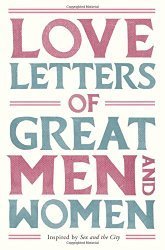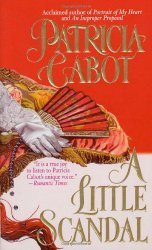Hannah Fielding's Blog, page 89
February 18, 2015
How ebook analysis can shape writing and publishing strategy
 Follow my blog with Bloglovin An interesting new trend is emerging in publishing news – releases from Amazon sharing reader and reading data.
Follow my blog with Bloglovin An interesting new trend is emerging in publishing news – releases from Amazon sharing reader and reading data.
Take, for example, its news release on the most highlighted passages in Montlake Romance titles (Montlake is its romance imprint). Amazon shared the 14 passages that readers most frequently highlighted on their Kindles when reading Montlake books. At the top of this list was:
“I love you,” he said, delirious with it… “Like I’m the first man who ever loved a woman in the history of the universe. Like it was me loving you that caused the Big Bang, and brought everything else into existence.” – Into Darkness by J.T. Geissinger
Then, more recently, Amazon revealed its annual list of the top 20 most romantic cities in the US, based on sales data for romance novels, romantic comedy moviesand a curated list of romantic music, across cities with more than 100,000 residents on a per capita basis. Topping the list was Knoxville, followed by Miami, Orlando, Alexandria, Vancouver, Cincinnati and Dayton (the full list is here).
The more data Amazon releases, the more it attempts to build a picture of the consumer base – in this case, in the romance genre. Of course, Amazon has its own reason for doing so; in the case of the Montlake release, it is publicising its own books and garnering interest and sales. But savvy authors and publishers keeping an eye out for news items based on who’s reading, how and why can be better informed, and potentially build the knowledge into their marketing campaigns. So, for example, perhaps a publisher would target the top ten romantic cities for a book publicity drive, knowing that the market is strong there for romance.
And what of the author? How should a writer like me be affected by such data? The answer, I believe, is ‘not at all’! Should I read the ten most highlighted passages in romance ebooks? Absolutely. Should I attempt to emulate them in my own writing? No – a writer must remain true to her own craft. Should I keep up-to-date as to which cities read the most romance? Of course. Should I attempt to somehow write specifically for people in those cities? No – a writer must remain true to her own craft.
Of course marketability matters. But whenever I am asked to offer guidance to new or aspiring writers, I am careful to state that writing for yourself is of paramount importance. You must write the book you want to read, the book that is in your heart. Markets change; fads come and go – your writing must be authentic in order to stand the test of time.
Also, I think a danger exists in reading too much into such news releases. For the first release, it’s an assumption that each time a reader underlines a passage it is because she loves it. Perhaps, in fact, she wanted to check something about it later. Perhaps she has missed the bookmark function and is just marking her place. We can’t know that marking passages equates to adoring passages. Nor can we strictly determine that ‘a city is romantic’ based on the number of sales there of romance novels, rom-coms and romantic music. There’s so much extra detail required in order to build a clear picture of the consumer base. It could simply be the case, for example, that the citizens of Knoxville are the most generous givers of romantic music, books and DVDs as gifts in the US, and few of them actually consume the products themselves (unlikely, certainly, but it makes the point that the data is lacking depth).
I will continue to read such news items with interest. Then I will close the news website and go back to working on my latest novel, happy in the knowledge that I am entirely on the right track because I’m writing what is in my heart to write.
February 16, 2015
The most romantic love letters
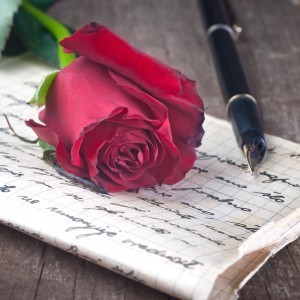 Follow my blog with Bloglovin This week the media has been reporting on the results of a survey to uncover the best love letters of all time, set up by life insurance company Beagle Street. These are the top ten letters, with excerpts:
Follow my blog with Bloglovin This week the media has been reporting on the results of a survey to uncover the best love letters of all time, set up by life insurance company Beagle Street. These are the top ten letters, with excerpts:
1. Johnny Cash writing to his wife (1994)
We get old and get use [sic] to each other. We think alike.
We read each other’s minds. We know what the other wants without asking. Sometimes we irritate each other a little bit. Maybe sometimes take each other for granted.
But once in awhile, like today, I meditate on it and realize how lucky I am to share my life with the greatest woman I ever met. You still fascinate and inspire me.
You influence me for the better. You’re the object of my desire, the #1 Earthly reason for my existence. I love you very much.
2. Winston Churchill to his wife (1935)
In your letter from Madras you wrote some words very dear to me, about my having enriched your life. I cannot tell you what pleasure this gave me, because I always feel so overwhelmingly in your debt, if there can be accounts in love…. What it has been to me to live all these years in your heart and companionship no phrases can convey.
3. John Keats to his neighbour Fanny Brawne (1819)
I cannot exist without you – I am forgetful of every thing but seeing you again – my Life seems to stop there – I see no further. You have absorb’d me. I have a sensation at the present moment as though I was dissolving – I should be exquisitely miserable without the hope of soon seeing you. I should be afraid to separate myself far from you.
4. Ernest Hemingway to actress Marlene Dietrich (1951)
I can’t say how every time I ever put my arms around you I felt that I was home. Nor too many things. But we were always cheerful and jokers together.
5. Napoleon Bonaparte to Josephine (1796)
My happiness is to be near you. Incessantly I live over in my memory your caresses, your tears, your affectionate solicitude. The charms of the incomparable Josephine kindle continually a burning and a glowing flame in my heart.
6. Richard Burton to Elizabeth Taylor (1964)
My blind eyes are desperately waiting for the sight of you. You don’t realize of course, EB, how fascinatingly beautiful you have always been, and how strangely you have acquired an added and special and dangerous loveliness.
7. King Henry VIII to Anne Boleyn (1527)
I beg to know expressly your intention touching the love between us. Necessity compels me to obtain this answer, having been more than a year wounded by the dart of love, and not yet sure whether I shall fail or find a place in your affection.
8. Beethoven to his anonymous Immortal Beloved (1812)
Though still in bed, my thoughts go out to you, my Immortal Beloved, Be calm-love me-today-yesterday-what tearful longings for you-you-you-my life-my all-farewell. Oh continue to love me-never misjudge the most faithful heart of your beloved. Ever thine. Ever mine. Ever ours.
9. President Gerald Ford to his wife (1974)
No written words can adequately express our deep, deep love. We know how great you are and we, the children and Dad, will try to be as strong as you. Our Faith in you and God will sustain us. Our total love for you is everlasting.
10. Musician Jimi Hendrix to an unknown girlfriend (date unknown)
happiness is within you….so unlock the chains from your heart and let yourself grow—
like the sweet flower you are…..
I know the answer–
Just spread your wings and set yourself
FREE
Love to you forever
The one that stands out to me is Beethoven’s, which is so beautifully written. I can imagine his beloved re-reading his words over and over until they were embedded in her soul.
The Guardian newspaper offered five other letters that are sublimely romantic (see http://www.theguardian.com/books/booksblog/2015/feb/11/straight-from-the-heart-the-best-love-letters-valentines-day). I love Zelda Fitzgerald’s letter to F. Scott Fitzgerald in 1930:
Darling – I love these velvet nights. I’ve never been able to decide … whether I love you most in the eternal classic half-lights where it blends with day or in the full religious fan-fare of mid-night or perhaps in the lux of noon. Anyway, I love you most and you ’phoned me just because you phoned me tonight – I walked on those telephone wires for two hours after holding your love like a parasol to balance me.
So what makes a love letter powerful, emotive, romantic? Looking at the excerpts of the letters voted upon here – what is inherent and what is lacking – I have these thoughts:
A love letter must from the heart. It should be pure, unfiltered emotion on the page. The soul laid bare. The writer must be courageous in sharing his or her truths, because these words simply must be written.
A love letter must be poetic. The best letters are examples of exquisite writing, with evocative imagery, well-chosen words and phrasing that’s lyrical. They are songs on paper that celebrate love.
A love letter must be treasured. The letter is designed to be kept, to stand as a record of love in a moment in time. There is a permanence to the love letter – like a beautiful bird captured and displayed in a gilded cage; the love may not last in the real world, but in that letter it is eternal.
I think that the art of the love letter is, tragically, dying. Yes, you could construe a text message or an email or a Facebook wall post as a mini letter, but does it really have the same impact and longevity? A love letter is handwriting on paper – an object that the giver toiled over and the receiver keeps always. Who takes the time to undertake such writing these days?
But it is not only the fast-paced, digital world that renders love letters antiquated for so many; we, as people, have changed. It is notable that the older love letters are the most romantic – people, I wholeheartedly believe, were more romantic in the past. To write love letters was once commonplace, accepted, expected, respected. Today, it’s somewhat unusual.
Here’s an idea: This Valentine’s Day, don’t buy into the consumerism that the retailers push onto you. Your loved one doesn’t need chocolates or a teddy bear, just a good, old-fashioned love letter from the heart. Why not really take care over it? Craft the writing carefully. Choose some beautiful note paper and a flowing fountain pen. Spritz the page with your perfume. Tie the letter up in a ribbon or seal it with wax. Simple, but really rather beautiful. And who knows, perhaps in one hundred or two hundred years’ time, it will be your letter topping the ‘most romantic love letters ever written’ list!
If you’d like some inspiration, I recommend this book:
February 14, 2015
Heredity and my new novel, Indiscretion
 Follow my blog with Bloglovin With just weeks to go until the publication of my new novel, Indiscretion, I’m delighted to be able to start sharing something of the background and themes of to the book. Today, I’d like to introduce this poem, by Thomas Hardy:
Follow my blog with Bloglovin With just weeks to go until the publication of my new novel, Indiscretion, I’m delighted to be able to start sharing something of the background and themes of to the book. Today, I’d like to introduce this poem, by Thomas Hardy:
I am the family face;
Flesh perishes, I live on,
Projecting trait and trace
Through time to times anon,
And leaping from place to place
Over oblivion.
The years-heired feature that can
In curve and voice and eye
Despise the human span
Of durance – that is I;
The eternal thing in man,
That heeds no call to die.
This poem acts as a catalyst in the book, inspiring the heroine of the book, Alexandra de Falla. Alexandra was born in Spain, at the family hacienda El Pavon, to a Spanish father and an English mother. But when her mother died, Alexandra moved to England, aged ten, to be brought up by her mother’s sister. Fifteen years later, her long-estranged father comes to her and asks her to return home, to El Pavon in Andalucia, to see her grandmother, the matriarch, whose years are advancing. Alexandra is understandably reticent – she holds plenty of anger toward her Spanish family for their treatment of her mother and for abandoning her all these years to the care of her uptight and dry Aunt Geraldine. But she can’t deny interest in his offer, because Alexandra has always longed to understand her mother and her own heritage, and has never felt entirely at home or complete in England.
After she reads Hardy’s profound words, she considers them for days. ‘Flesh perishes, I live on’ – Alexandra’s mother is gone, but a legacy lives on. What was it that drew her mother to Spain, to El Pavon? And what then drove her away? What may Alexandra learn of her past, and herself, in that place? As I write, ‘The exotic allure of her homeland had always been undeniably potent. Would she discover the missing piece of herself there?’
Ultimately, the call to self-discovery is impossible to resist for an intelligent woman. She will not go to Spain to be a dutiful daughter – to build a relationship with her father, his new wife and her stepsister – or granddaughter to the formidable and controlling Duquesa. Nor will she go because she needs to research the novel she is writing, set in that wild and passionate land, or to spread her wings and explore; to stand as different from her peers, who are settling down and having children. These are good reasons to travel to her homeland, it is true, and she can try to tell herself that they are what drives her. But the truth is that it is her roots that call her home. Her aunt tell hers, ‘Nothing good can come out of this escapade… This constant soul-searching can only lead to tears.’ But Alexandra can only reply, ‘I can’t ignore my Spanish blood any longer. It’s part of my identity.’
Alexandra is following the Delphic maxim ‘Know thyself’, and it is a journey that takes great courage. For it is certain that what she learns at El Pavon about her family and about herself will be transformative, and will shape a very different future to the one she could have chosen had she stayed in England and married her old friend Ashley. The question is: Will Alexandra be able to cope with that change and embrace it fully? Will she be, as is her birthright, Spanish? Or will the customs and culture and political landscape of Spain in the era drive her away, as it did her mother years before? Can Alexandra be the woman she wants to be in Spain, with her family?
Cover reveal for my new novel, Indiscretion!
Follow my blog with Bloglovin Happy Valentine’s Day. Today I’m delighted to be able to share with you the cover for my new novel, Indiscretion, which will publish in April. I think this is my favourite cover yet – what do you think?
February 10, 2015
Want to feel better about yourself? Read more books…
 Quick Reads is a UK-based initiative that aims to encourage adult engagement with reading. It commissions big-name authors to write shorts – little books that are quick and easy to read, so that the one in six adults in the country who struggle with reading may build their confidence. Its website reports that since 2006 it has distributed more than 4.5 million books and registered 3 million library loans.
Quick Reads is a UK-based initiative that aims to encourage adult engagement with reading. It commissions big-name authors to write shorts – little books that are quick and easy to read, so that the one in six adults in the country who struggle with reading may build their confidence. Its website reports that since 2006 it has distributed more than 4.5 million books and registered 3 million library loans.
The ethos at the heart of Quick Read’s work is that reading is beneficial to everyone. A broad statement, though –what exactly are the benefits? A recent research project illuminated a massive one: that reading improves self-esteem.
The research was carried out by Dr Josie Billington at the University of Liverpool. She engaged with 4,164 people online, and weighted the results statistically against the information on age, gender, region and education from the last census, so that her findings represent the population as a whole.
Crucially, she found that people who read for half an hour a week or more are more likely to have greater life satisfaction and good self-esteem, and less are likely to be depressed, than those who don’t read.
Interestingly, the study highlighted that a reason non-readers cite for their lack of interest in books is a difficult event in their lives, such as ill health, death or getting divorced, and some 1.2million adults have stopped reading as a result of some form of depression. So depression may stop a person reading – the loss of engagement that’s intrinsic to the illness – but it could also be an important factor in helping a person out of that depression.
What is it about reading that makes a person enjoy life more, feel better about him-/herself and be better protected from depression? I think it comes down to these things:
Connection:‘We read to know we’re not alone,’ wrote William Nicholson. Books are a means of connecting to places and times and, importantly, people. Connections are essential to self-esteem and fulfilment. People write books; people are intrinsic to the plot or subject matter of any book – therefore, whatever book you read, you are undertaking the act of connecting.
Enjoyment: Is there any better feeling in the world than reading a book you love (and is there any feeling more bittersweet than finishing that book)? Books bring pleasure.
Knowledge: A person who’s growing is a person whose self-esteem is sound. Non-fiction books are designed to educate, which is a powerful foundation for growth. Even novels build knowledge, though; sometimes of the outside world, but often of the inner landscape. We’re moved by the story – we smile, we laugh, we cry, we’re utterly gripped – and that is transformative because it forces us to explore why,what is it that affects us? Take romance, for example. You read so that you grow the romantic part of you. And that self-knowledge builds your sense of self, and self-esteem.
What do you think? Is reading an important part of your life? Do you feel lost and lonely without your weekly (or daily, perhaps) dip into a book? I would love to hear your thoughts.
February 9, 2015
By the light of the moon
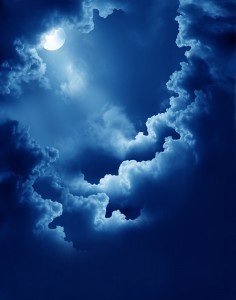 Moonlight – an element of nature about which poets have waxed lyrical for centuries. For Charles Baudelaire, the moon was sad: ‘Earthward she lets a furtive tear-drop flow’. For Robert Graves, it was unkind: ‘The cruel Moon hangs out of reach/Up above the shadowy beech’. For Emily Bronte, it made ‘All soft and still and fair’. For Thoreau, ‘She’s mistress of the night’. The different interpretations strike a chord in me, for I think moonlight can create very different effects depending on the setting and the mood.
Moonlight – an element of nature about which poets have waxed lyrical for centuries. For Charles Baudelaire, the moon was sad: ‘Earthward she lets a furtive tear-drop flow’. For Robert Graves, it was unkind: ‘The cruel Moon hangs out of reach/Up above the shadowy beech’. For Emily Bronte, it made ‘All soft and still and fair’. For Thoreau, ‘She’s mistress of the night’. The different interpretations strike a chord in me, for I think moonlight can create very different effects depending on the setting and the mood.
In my novel The Echoes of Love, Paolo and Venetia have different impressions of Venice by moonlight:
Paolo had turned away to stare at the dazzling view that lay in front of them. ‘None of the works of art of man equal the sight of Venice by the Grand Canal when the moon is up,’ he murmured, as though to himself, his attention riveted on the endless line of palazzi, the ghostly whiteness of their marble fronts rejuvenated by night. ‘For a few hours the moon hides the city’s frightful rotting façades behind a transparent silver mask, giving her some fairylike quality, a sort of innocence. Looking like this, one would never guess at the decay which gnaws at her core.’…
His words echoed Venetia’s thoughts, but not quite. Ever since she could remember, Venice in moonlight had a strange magical power over her. She didn’t see the decay, only the enchantment.
Thus the moonlight is like the masquerade mask that the city dons, only Paolo sees beyond the mask and Venetia does not desire to. For Paolo, the moon is deceptive; for Venetia it is alluring.
Later in the book, when the couple are holidaying together on Sardinia, the moonlight takes on a different feel:
After dinner, Paolo walked Venetia back to La Sirena. The moon was shining, the stars winking at them happily in the navy velvet canopy above. The sea was like a table of amethyst liquid, glistening with moonlight. In the distance, the Port of Santo Stefano wore her lights as a woman wears her diamonds, sparkling and glowing against the darker bulk of the hills behind. There was something infinitely peaceful and refreshing now that the sun had gone down; the air was as wine – cool and reviving, intoxicating the lovers.
Now the light is not concealing; it is calming. The lovers project their own feelings onto the setting; they interpret the light differently now that they are happy.
Even when the light is fading it can be moving and inspirational:
Walking now on the wet sand by the sea’s edge, Venetia felt the night-cooled water fresh over her toes, a delicious sensation. The wind touched her cheek and she looked up quickly at the greyish light. The moon was fading but was still flooding the dark glassy surface of the water with metallic light, creating a silvery staircase leading from their feet all the way to the moon. She took out the clips that held her hair up, her eyes lingering on the reflected image on the sea. ‘It’s so beautiful,’ she sighed.
The moon has an almost fairytale feel, calling to mind Paolo’s words: ‘If I had it my way, I would take you to my palace in the moon, where the stars shine always bright, and the angels sing all night a beautiful lover’s hymn.’ When Venetia asks, ‘What about the sun? Do the angels also sing there in daytime?’, he replies, ‘My palace in the moon knows only night. Sunshine would be too dazzling and would eclipse the ethereal magic and poetry of the moonlight.’
The ethereal magic and poetry of the moonlight – that is what I see when I look at the moon. There is something so stirring about the sight of it. It can guide, it can comfort, it can chill, it can melt. It is an enigma, ever-changing and powerful. One thing is certain: when I am writing a scene situated outside at night, I am always be careful to consider the phase of the moon, its placement in the sky, its visibility and, most importantly, whether the silvery light it casts is illuminating and beautiful, or pale and cold.
February 7, 2015
Harper Lee
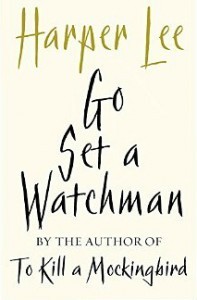 The publishing world has been abuzz this week with the news of the discovery of a second novel by Harper Lee more than 50 years since the publication of her first.
The publishing world has been abuzz this week with the news of the discovery of a second novel by Harper Lee more than 50 years since the publication of her first.
To Kill a Mockingbird was one of the most powerful, memorable books I read in my childhood, and I’m not alone by any means in having read and enjoyed it. The 1960 debut was wildly successful from the outset,earning Lee the Pulitzer Prize in 1961, and since then it has been translated into more than 40 languages, has sold in excess of 40million copies worldwide and has become one of the most important books in American literature.
In the past half-century, much has been written of the novel and its author, who frequently featured in lists of acclaimed authors who wrote only one novel, with the likes of Ralph Ellison (Invisible Man), Boris Pasternak (Dr Zhivago), Margaret Mitchell (Gone With the Wind), Emily Brontë (Wuthering Heights) and Sylvia Plath (The Bell Jar). But then came the announcement that another Lee manuscript had been discovered. Lee has said:
In the mid-1950s, I completed a novel called Go Set a Watchman. It features the character known as Scout as an adult woman and I thought it a pretty decent effort. My editor, who was taken by the flashbacks to Scout’s childhood, persuaded me to write a novel from the point of view of the young Scout. I was a first-time writer, so I did as I was told.
I hadn’t realized it had survived, so was surprised and delighted when my dear friend and lawyer Tonja Carter discovered it. After much thought and hesitation I shared it with a handful of people I trust and was pleased to hear that they considered it worthy of publication. I am humbled and amazed that this will now be published after all these years.
The reaction has been staggering. The Bookseller magazine described booksellers as ‘giddy’ at the news and reported a ‘trade frenzy’. According to Waterstones, the book will be ‘the most sure-fire hit of the century’. Its fiction buyer, Chris White, told The Bookseller: ‘I think if you were to come up with a wishlist of writers you most wanted to publish another book, there is nobody who would be above Harper Lee.’
And the readers’ reaction? Well, within 24 hours of the news breaking Go Set a Watchman had shot to the top of the Amazon bestseller list – all on preorders; the book will not be released until 14 July.
Although written in advance of To Kill a Mockingbird, the new novel is a sequel. According to the publisher’s statement, it is:
set in the fictional southern town of Maycomb during the mid-1950s, and sees Scout return from New York to visit her father, the lawyer Atticus Finch. She is forced to grapple with issues both personal and political as she tries to understand her father’s attitude toward society, and her own feelings about the place where she was born and spent her childhood.
Beyond the basic facts of the release, the media has been reporting all sorts of speculation, centered on the legitimacy of the discovery of the manuscript, and the ability of Harper Lee to make sound decisions given her health, which must be very difficult for the author to contend with. After all, it was her open distaste of publicity that led her to retire from public life in the early 1960s. She told an interviewer then that the reaction to To Kill a Mocking Bird was ‘just about as frightening as the quick, merciful death I’d expected … like being hit over the head and knocked cold’. I wonder what she makes of the media furore now. At least this time she could have expected it.
What stands out for me in this story is the courage of the author in releasing the book – she could have left it alone, and been content to be remembered as the writer of one of the most beloved and acclaimed books in American history. But instead, she has been true to her art, and gifted the world with another work. And certainly it is a gift – one for which people the world over are thankful.
February 4, 2015
Going beyond the author’s legacy
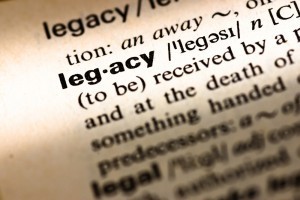 Stieg Larsson, sadly, never lived to see his novels, the Millennium series, become the worldwide sensation of the past decade. Indeed, he had not even attempted to publish them; he wrote them for his own pleasure in the evenings after work. After this death, the manuscripts were discovered, and subsequently published to great acclaim. We will never know what Larsson would have made of that acclaim, nor what he would think of the news that a fourth Millennium novel, That Which Does Not Kill Us, will be released in August of this year. Not a novel that he wrote, but one penned by another writer, David Lagercrantz.
Stieg Larsson, sadly, never lived to see his novels, the Millennium series, become the worldwide sensation of the past decade. Indeed, he had not even attempted to publish them; he wrote them for his own pleasure in the evenings after work. After this death, the manuscripts were discovered, and subsequently published to great acclaim. We will never know what Larsson would have made of that acclaim, nor what he would think of the news that a fourth Millennium novel, That Which Does Not Kill Us, will be released in August of this year. Not a novel that he wrote, but one penned by another writer, David Lagercrantz.
So reported the Guardian newspaper:
The book will continue the story of the troubled but resourceful heroine Lisbeth Salander first made famous in Larsson’s The Girl with the Dragon Tattoo.
…
“What I wanted to make use of in the book was the vast mythology that Stieg Larsson left behind, the world he created,” Lagercrantz told the DagensNyheter newspaper, adding that he remained loyal to Larsson’s writing style which weaved criticism of social and political issues with criminal intrigue.
Larsson’s own books have sold 80 million copies worldwide. Clearly, the publisher Nordstedts hopes to plump up this figure – it has compared the release to that of Dan Brown’s Da Vinci Codeback in 2003.
Without doubt Larsson created a fascinating, vivid and unique fictional world, and I can see how a thriller writer would be excited to situate a new story in that world. This development is much in the vein of the immensely popular James Bond series. Ian Fleming created Bond, and wrote ten novels about him before dying suddenly. Two novels, The Man with the Golden Gun and Octopussy and The Living Daylights, were published posthumously. According to the Oxford Dictionary of National Biography, 30 million Fleming books were sold during his lifetime, and in the two years after this death that figure rose to 60 million. Clearly, Bond was popular. And so other authors began to take on the character: Kingsley Amis, Christopher Wood, John Gardner, Raymond Benson, Sebastian Faulks, Jeffery Deaver, William Boyd and Anthony Horowitz.
The common themes are as follows:
The story world is much loved and admired.
The original works sold very well.
The original authors were prevented from developing their own story world (both authors died in their fifties, suddenly).
Fundamentally, the business of these newly authored works is the driving force: they will make money. But for the writer creating the book based on the ideas of another, it is about honouring the author in this continuation of his interrupted work, and also about quite openly drawing inspiration from another writer.
Creative people are inspired by the creative works of others. All books to some degree pay homage to the many, many books the author has read before. We are quite comfortable with this fact, but a certain discomfort can creep in when people find too close a connection to another work. Take, for example, EL James. She was criticised by somefor the fact that her Fifty Shades series began as a work of Twilight-inspired fan fiction. But the books sold, in vast quantities nonetheless.
What do you think about an author’s legacy? Do you champion fan fiction? Do you think writers have the right to situate their stories in another’s fictional landscape? I would love to hear your thoughts.
February 1, 2015
A slice of Chinese mythology: Nüwa
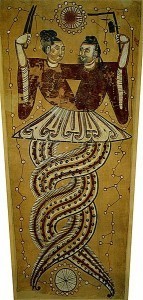 In my novel The Echoes of Love, the protagonist, Venetia, is somewhat lost – torn between heart and head: her interest in the man she has recently met, Paolo, and her long-term independence and avoidance of romantic entanglements. She is walking home from work one evening along the CalledelParadiso, amost medieval-looking street in Venice, when a brightly lit shop window catches her attention, piercing the gloom as it does and acting like a beacon, pulling her in. On impulse she goes inside, and a Chinese man greets her and invites to sit with him. Uneasily, she looks around the room, which is thick with the heady scents of incense and opium. Once her eyes adjust to the semi-darkness she sees a cushion and, coiled up on top of it, an enormous serpent.
In my novel The Echoes of Love, the protagonist, Venetia, is somewhat lost – torn between heart and head: her interest in the man she has recently met, Paolo, and her long-term independence and avoidance of romantic entanglements. She is walking home from work one evening along the CalledelParadiso, amost medieval-looking street in Venice, when a brightly lit shop window catches her attention, piercing the gloom as it does and acting like a beacon, pulling her in. On impulse she goes inside, and a Chinese man greets her and invites to sit with him. Uneasily, she looks around the room, which is thick with the heady scents of incense and opium. Once her eyes adjust to the semi-darkness she sees a cushion and, coiled up on top of it, an enormous serpent.
The Chinese wise man, Ping Lü, says:‘Don’t be afraid…. This is Nüwa.’
Venetia is not remotely fond of snakes, and this little shop and its strange proprietor make her deeply uncomfortable. She wants to run – her rational mind tells her to. But, as I write:
[S]he had a strange feeling, as if an invisible, singular power were drawing her more and more into the shop, and something deeper than curiosity was compelling her to stay.
So begins a tentative relationship between Venetia and Ping Lü, who offers the ancient wisdom of his great land as a means of guiding Venetia on her journey. This first glimpse of Chinese mythology – the embodiment of the goddess Nüwa –enchants Venetia sufficiently to stay and hear Ping Lü’s advice.
In ancient Chinese mythology, the goddess Nüwa was of pivotal importance. It was she who created mankind, and then saved it when heaven began to collapse.
According to legend, Nüwa created man from the yellow clay of the earth – on the seventh day of creation, having already made chickens, dogs, sheep, pigs, cattle and horses. This sounds a lot like the story of Genesis, but the next part contains a twist: instead of destroying the creatures she created in a great flood, Nüwaprotected them from natural disaster.The classic philosophical Chinese text the Huainanzi, which dates back to the second century BC, explains that the world was collapsing because two powerful gods had fought and crashed into Mount Buzhou, which held up the sky:
[T]he four pillars were broken; the nine provinces were in tatters. Heaven did not completely cover [the earth]; Earth did not hold up [Heaven] all the way around [its circumference]. Fires blazed out of control and could not be extinguished; water flooded in great expanses and would not recede. Ferocious animals ate blameless people; predatory birds snatched the elderly and the weak.
Nüwa took action to separate heaven from the earth once more. She patched up the sky with coloured stones smelted together. She used the legs of a giant sea turtle to replace the four broken pillars. She slayed a black dragon that was wreaking havoc. Peace was restored to the land. With her husband Fuxi, she ruled over the healed world as the mother of all people.
Nüwa and Fuxi have been depicted in countless artworks over the centuries, and often they are part snake, part human – as in the image accompanying this post, which was discovered in the Astana Graves in in Xinjiang, China. Ping Lü gives Venetia a jade pendant of Nüwa and tells her:
‘This stone protects the wearer, and is a status symbol indicating the dignity, grace and morality of the owner.’
Venetia wears it always from then on, and in doing so I like to think that she receives a touch of Nüwa’s wisdom, spirit and healing power. Because something is broken in Venetia’s heart, and only by fixing what is damaged can she find the courage and the faith to truly love again.
January 30, 2015
A Little Scandal by Patricia Cabot
From the blurb:
When beautiful Kate Mayhew is hired as chaperone to Burke Traherne’s headstrong daughter Isabel, the Marquis finds himself in an impossible predicament. Torn between the knowledge that she is exactly what Isabel needs but also, for him, the worst possible temptation, he finds himself in constant proximity with someone who threatens his independence. Known for his steely self-control since the day he caught his wife with a lover, Burke has vowed never to risk marriage again.
In accepting his lordship’s offer of employment, the feisty Kate faces two perils; her wild attraction to a man who has sworn off love, and a date with her own scandalous past…which she cannot keep secret forever.
Having read and enjoyed Meg’s historical romance Ransom My Heart a couple of years ago (http://www.hannahfielding.net/?p=1285) and enjoyed it immensely, I was intrigued to try one of the newly presented Patricia Cabot titles. Meg wrote these early on in her career, and I wondered whether I would see a difference in her writing.But I was delighted to find that her voice and style are intact and as engaging as ever.
I thoroughly enjoyed the story. It’s full of action and twists and turns, and feels entirely plausible and realistic for the historical setting. The mystery had me gripped, and the author expertly drip-feeds information through the story so that you learn slowly the nature of the scandal that haunts Kate, and the truth behind the night that changed her life forever. I do love a book with a villain in it, and this one certainly delivers that!
Kate makes a wonderful heroine: feisty and strong-willed but endearingly vulnerable and inexperienced too. And Burke is man I couldn’t help but fall for. He reminds me of my own alpha male characters – powerful, handsome and masterful, but tortured by misdeeds and misunderstandings of the past. I especially loved him in his role as father; his attempts to control his headstrong daughter are quite comical at times. But most of all it is in the role of lover that he shines. Bright enough to blind the reader, at times!
This is a witty, exciting book to read, but it is the romance that really sets it apart. I’d give it a ten out of ten on the heat scale. At a certain point I wondered whether the story could possibly progress, so engrossed were Kate and Burke in discovering each other. The love scenes are beautifully written and very passionate.
The ending is wholly satisfying, exactly what you hoped for but couldn’t quite expect, so difficult are the circumstances in which the characters find themselves at the end. I was left smiling, but with that twinge of sadness deep down that the story had ended: a sure sign of a good book.
The Patricia Cabot novels are out now in ebook format, and I shall certainly be downloading the others to read now. I greatly admire Meg’s current works in the romance genre – paranormal and contemporary romance for adults and teenagers – but having read this novel I have to say that I wish she would dust her Patricia pen off and write more historical romances. I, for one, would read every one!
A Little Scandal is available now from Amazon; click on the book cover below to visit the store.


